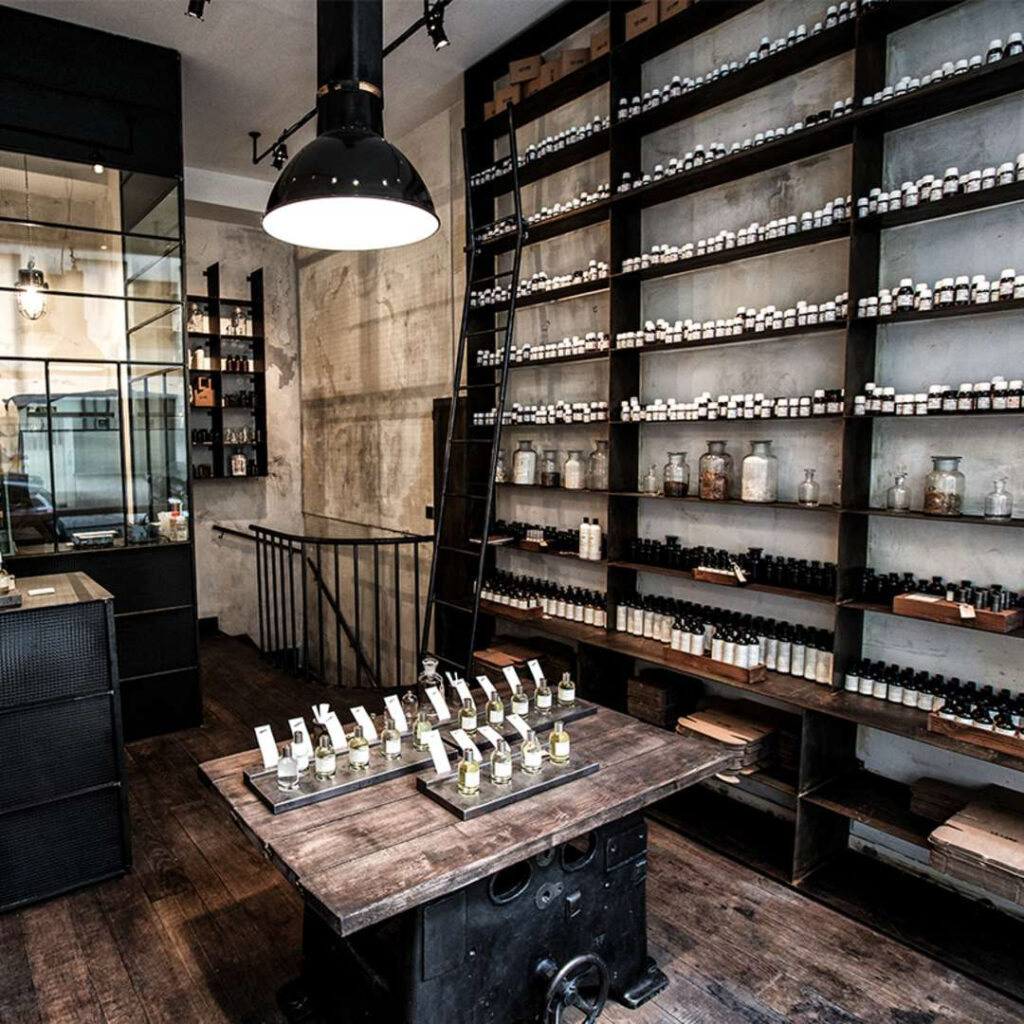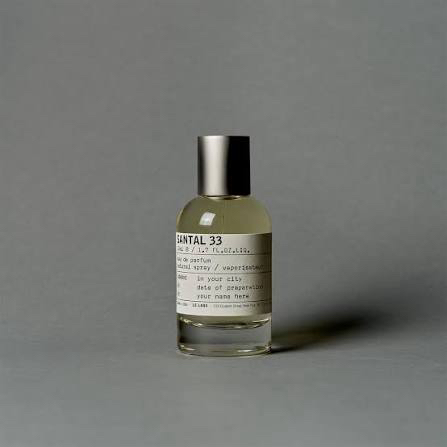If there’s one fragrance that has defined the last decade— in coffee shops, creative studios, and candlelit lofts around the world — it’s Le Labo’s Santal 33. What started as a quiet niche perfume from a small New York label has transformed into a global cult phenomenon, instantly recognizable by its smoky, woody allure and its minimalist label.
But what exactly is behind this obsession? Why did a fragrance launched in 2011 become the signature scent of an entire generation — from Brooklyn baristas to fashion insiders in Paris and Tokyo? Let’s unpack the story behind Le Labo’s Santal 33, its origin, allure, and the cultural moment it continues to define.
The Birth of Le Labo: A Rebellion Against Mass-Market Perfume

To understand Santal 33, you first have to understand Le Labo — the artisanal perfume house founded in 2006 by Eddie Roschi and Fabrice Penot in New York’s Nolita neighborhood.
At the time, the fragrance industry was dominated by designer scents and glossy marketing campaigns. Le Labo set out to do the opposite. Their vision was “slow perfumery” — crafting small-batch fragrances by hand, with minimalist packaging and no flashy advertising.
Each bottle is hand-blended to order, labeled with the customer’s name and date of creation. This idea of personalization and craftsmanship became a quiet revolution in perfumery — an antidote to overproduced, mass-marketed scents.
Le Labo quickly built a cult following among those who wanted authenticity and artistry in their perfume — not celebrity endorsements or excess glamour.
The Creation of Santal 33: A Fragrance Born from a Candle
Interestingly, Santal 33 didn’t begin as a perfume at all — it began as a candle.
In 2006, Le Labo released a candle called Santal 26, a warm, smoky blend of sandalwood, amber, and leather. Customers loved it so much that they began asking for a personal version — something they could wear.

So in 2011, perfumer Frank Voelkl transformed the candle’s essence into a unisex fragrance: Santal 33.
The formula blended Australian sandalwood, cedarwood, cardamom, iris, violet, and leather, creating a scent that was simultaneously comforting and mysterious — smoky like a fireplace, yet creamy and sensual on the skin.
The “33” in its name refers to the number of ingredients used in the formula — a nod to Le Labo’s stripped-down naming system (like Rose 31, Thé Noir 29, and Another 13).
The Scent Profile: What Makes It So Addictive

Describing Santal 33 is tricky, because it smells slightly different on everyone. That’s part of its magic.
At first spritz, you get the spicy freshness of cardamom and iris, followed by creamy sandalwood and cedarwood, grounded by smoky leather and musk. It’s woody, warm, and subtly sensual — evoking the image of a campfire in the desert, crackling under a starlit sky.
What sets it apart is the balance — neither overtly masculine nor feminine. It feels both modern and timeless, both rugged and soft. This duality makes it wearable for anyone, in any setting.
As the brand puts it, Santal 33 “transforms the wearers into icons.” And perhaps that’s not far from the truth — because once you’ve smelled it, you know it instantly.
The Cultural Explosion: From Insider Secret to Urban Uniform

For the first few years, Santal 33 was a well-kept secret among creative circles — favored by editors, designers, and artists who loved its understated sophistication. But soon, word spread.
The turning point came when SoHo hotels and boutique stores began scenting their spaces with Santal 33-inspired fragrances. Guests who loved the scent would ask, “What is that smell?” — and soon discovered Le Labo.
By the mid-2010s, Santal 33 had become a signature scent of New York’s creative class, a symbol of quiet cool. It was the perfume of shared taxis and late-night gallery openings, of linen shirts and typewriters, of effortless taste that didn’t need to shout.
Its popularity then spread globally — from Los Angeles and London to Seoul and Sydney — becoming the olfactory equivalent of minimalism itself.
Why Everyone Knows (and Recognizes) Santal 33
There are a few key reasons why Santal 33 became one of the most instantly recognizable scents in the world:
- The Sandalwood Signature: Sandalwood has always been associated with calmness and sensuality, but Le Labo’s take is distinctive — dry, smoky, and slightly addictive. It smells natural yet mysterious, clean yet dirty, all at once.
- The Genderless Revolution: When Santal 33 launched, the fragrance industry was still heavily divided into “for him” and “for her.” Le Labo broke that binary, proudly labeling all their fragrances unisex. This inclusivity resonated with modern consumers who didn’t want to be boxed into gendered scents.
- The Minimalist Branding: The clinical-style label, featuring plain text and no imagery, was a refreshing contrast to flashy perfume ads. It made the product feel authentic — like a fragrance created for those in the know.
- The Emotional Marketing: Le Labo has never relied on traditional marketing. Instead, it built a sense of exclusivity through intimacy — the handwritten label, the quiet store interiors, the feeling that every bottle was made just for you.
All of this combined to make Santal 33 not just a perfume, but a cultural symbol — the scent of cool, creative confidence.
The Love-Hate Phenomenon: Can a Perfume Be Too Popular?
Of course, with great fame comes backlash. Some fragrance lovers now jokingly call Santal 33 “the perfume you smell on every third person in Brooklyn.”
Its ubiquity — especially among fashion insiders, boutique hotels, and creative agencies — has made it both iconic and divisive. For some, it’s intoxicating. For others, it’s overexposed.
But even critics admit that Le Labo changed the landscape of perfumery. Santal 33 introduced millions to niche, artisanal scent-making, paving the way for other indie brands like Byredo, Maison Margiela Replica, and Diptyque to flourish in mainstream consciousness.
The Emotion Behind the Fragrance
According to its creators, Santal 33 was inspired by the romanticism of the American West — the idea of freedom, individuality, and connection with nature.
Its imagery evokes a lone cowboy sitting by a campfire — not in a literal sense, but as a metaphor for independence and introspection. It’s this emotional resonance, more than anything, that keeps people coming back.
When you wear Santal 33, you don’t just smell good — you feel something: warmth, nostalgia, a sense of identity.
Beyond Perfume: The Expansion of the Santal 33 Universe

Today, Santal 33 is more than a perfume — it’s a brand identity. Le Labo has expanded its scent into candles, body lotions, shower gels, and even detergents, allowing fans to live entirely within the fragrance.
Hotels and boutiques around the world diffuse scents inspired by it, making Santal 33 an ambient experience rather than just a personal one.
It has even inspired countless “dupes” — budget-friendly alternatives from other brands that try to replicate its smoky-woody charm. But for true devotees, nothing quite compares to the real thing.
What Santal 33 Says About Modern Luxury
At its core, Santal 33 represents a new definition of luxury — one that values authenticity, craftsmanship, and individuality over logos or status.
It’s not about being exclusive or expensive; it’s about being personal. You don’t just buy Santal 33 — you make it yours, complete with your name on the label.
In a world flooded with noise and branding, this minimalist approach feels almost radical. It’s luxury stripped back to its essence: quality, character, and quiet confidence.
Final Thoughts: Why the Obsession Endures
More than a decade after its debut, Le Labo’s Santal 33 remains one of the most beloved — and discussed — perfumes of our time. Its appeal lies not only in its scent, but in what it represents: individuality, intimacy, and authenticity.
It smells like independence and nostalgia, like someone you’ve met once but never forgotten. It’s the scent of memory itself — smoky, fleeting, and unmistakably human.
In many ways, Santal 33 isn’t just a fragrance — it’s a cultural phenomenon. A quiet revolution that started in a small New York shop and became the defining scent of modern minimalism.
And perhaps that’s the real reason for the obsession: Santal 33 doesn’t just make you smell good — it makes you feel like the most authentic version of yourself.

Comments
One response
[…] style — translucent compositions that echo Japan’s understated philosophy. Brands like Le Labo, Maison Margiela Replica, and Byredo embrace the same balance of simplicity and […]